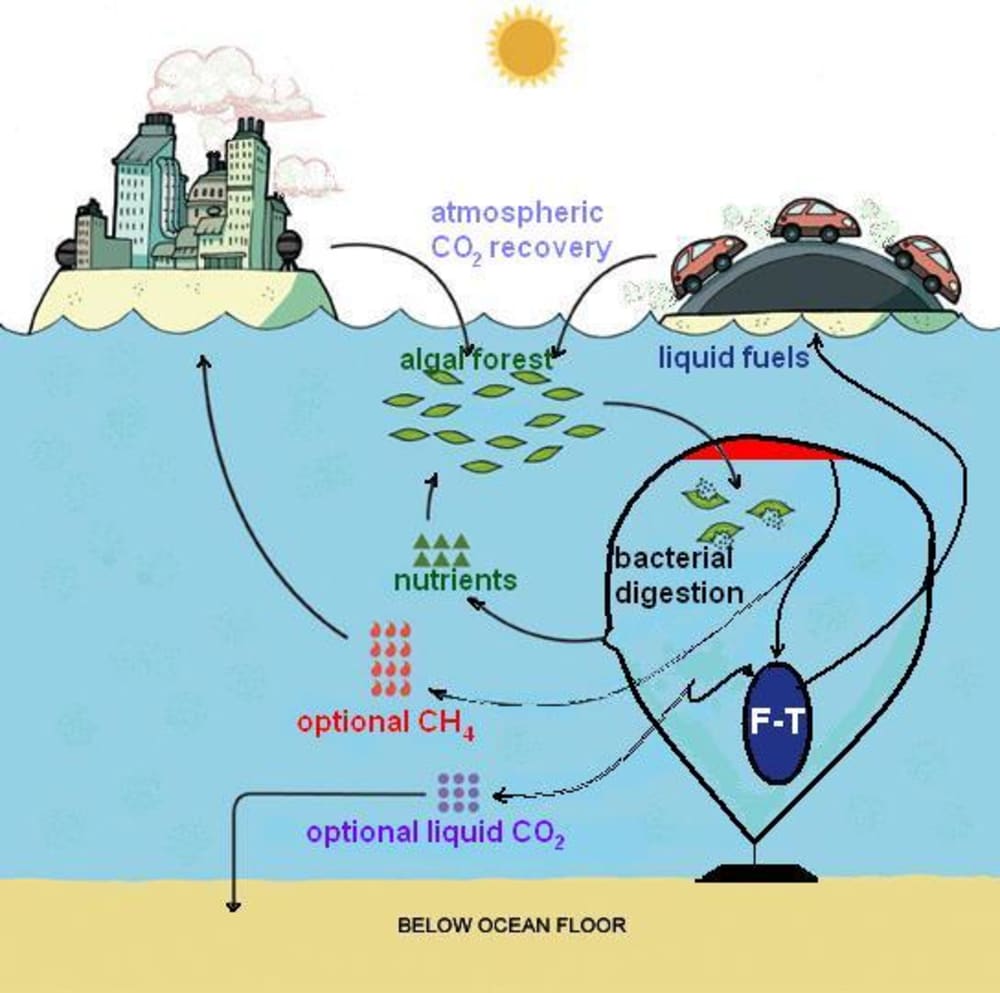In Ocean Algal Afforestation (OAA), a macro-algae forest (such as kelp, but any biomass will work) is grown on the ocean surface. Carefully managed harvesting allows the forest to grow to support a complete natural ecosystem with diverse and edible sea life. The harvested biomass is anaerobically digested by naturally occurring bacteria to produce CH4, CO2, plus the remainder, which comprises the nutrients needed to grow more macro-algae. Ocean conditions allow the separation of the CH4, CO2, and nutrients from each other without energy. The nutrients (including ammonia and essential minerals) are distributed to manage the forest growth as a sustainable ecosystem.
While ocean conditions would allow the production of 90% pure CH4, we can adjust the process to produce the appropriate mixtures of CH4 and CO2 needed to produce the desired liquid fuels, using the Carbon Sciences’ dry reformatting Fischer-Tropsch (F-T) process. The Carbon Sciences F-T process can produce a range of liquid fuels such as syn-gasoline, syn-diesel, syn-kerosene, etc. The economics of the Carbon Sciences process may be improved by moving the process under water where ocean pressure allows use of inexpensive insulating concrete-under-compression containers. Very high (400+ bar) ambient pressure allows the F-T process to proceed at lower temperature. Relatively low-grade (less than 100°C) waste heat from the F-T process could be used to run the microbial digestion process in the surrounding container at the optimum temperatures, perhaps 30-40°C.
Growing ocean forests within only 20% of the US economic zone could produce renewable liquid fuels equivalent to 100% of 2010 US oil demand for less than $50 per barrel. After replacing oil, further increasing operations rapidly reduces atmospheric CO2 levels by sequestering both the biologically produced CO2 and the CO2 from CH4 combustion. Ocean Algal Afforestation with liquid fuels is a breakthrough that can be sustained over large areas because it promises to increase ocean primary production, biodiversity, and food for people while removing CO2 from the atmosphere.
Like this entry?
-
About the Entrant
- Name:Mark Capron
- Type of entry:teamTeam members:PODenergy
- Software used for this entry:Excel
- Patent status:pending

